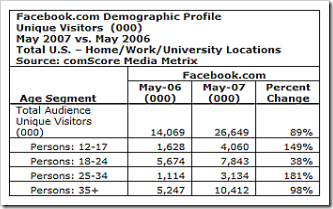 I’ve gradually come around to Twitter as both a communications and research tool. A year ago it could have been dismissed as a niche platform for a few hundred thousand hyper-social geeks. But now that adoption has tipped, with 14 million users last month (see chart), the power of the network is opening up new opportunities.
I’ve gradually come around to Twitter as both a communications and research tool. A year ago it could have been dismissed as a niche platform for a few hundred thousand hyper-social geeks. But now that adoption has tipped, with 14 million users last month (see chart), the power of the network is opening up new opportunities.
My favorite: Tweeting bakeries (note 1). A British company, Poke, has developed a little box that sits behind the counter at a bakery.¬† Whenever a new batch of rolls or pastries is ready to serve, the baker turns a dial to the specific item and presses a button. That automatically sends a pre-programmed Tweet to the bakery’s followers. It’s called, appropriately, BakerTweet.
Bank opportunities: Unless you merge operations with a bakery (maybe not such a bad idea), financial institutions have nothing nearly as exciting to Twitter about. However, there are useful items a branch could broadcast to its followers:
- When the drive-thru lane was empty (or vice versa)
- When branch queues have disappeared (or vice versa)
- When platform officers are available
- When specific specialists are available in the branch (e.g., home loan officer, small business banker, investment specialist)
- When certain popular employees are working (could be tweeted to just the followers of that person)
- Branch special offers
- Local community events and specials
And if you really want to gain some global recognition, enable payments for the baked goods via Twitter (see TwitPay). For example, users could respond back to the bakery’s tweet with:
@bakerytweet hold 2 chocolates pay $2.45 via @twitbank
Assuming users were registered at BakeryTweet and Twitbank, that’s all it would take to order and pay for two warm rolls (note 2).
Notes:
1. Kudos to Springwise for finding this idea here. 
2. Yes, there are fraud, privacy and reliability issues to work through, but as long as purchases are kept under a certain floor, the exposure would be minimal. 
3. See also the Harvard Business article last week (9 April 2009) by John Sviokla, Twitter: A Marketer’s Duct Tape.































